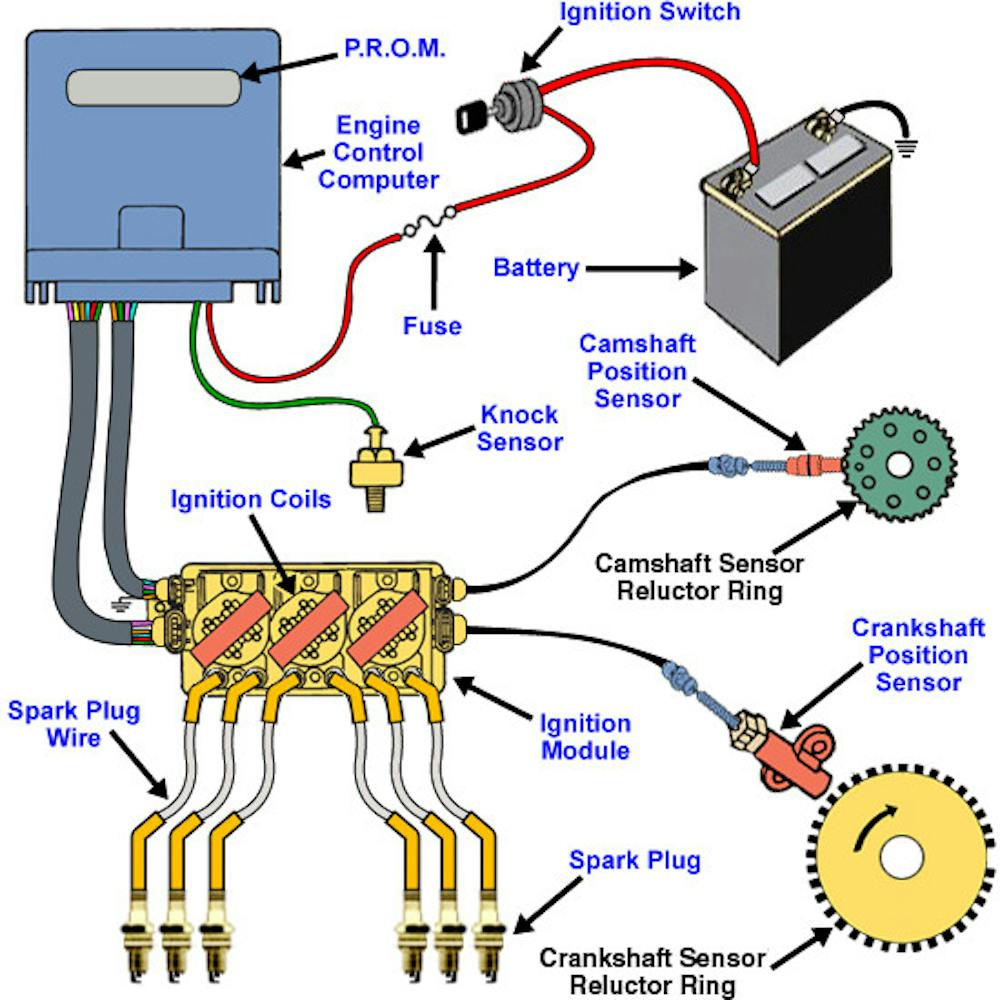Last week we discussed the importance of changing a car's engine oil. In this week's blog, we will discuss the importance of changing out spark plugs and various ignition components.
First we must establish that there are variances between older vehicles, and that older cars ranging from the 1960s to the mid-1990s contained a conventional distributor ignition system. On engines that still use a distributor, it is a good idea to replace the distributor cap, distributor rotor and ignition wires according to the manufacturer's recommendations. From 1996 to today, modern cars contain a direct injection system. These systems can either mount one ignition coil on each spark plug or share one coil for two plugs.
I, personally, being an avid auto enthusiast, have changed my own spark plugs and other components in the comfort of my garage at home. However, being away at college has taken that luxury away from me and has forced me to pay someone else to do it. The task is simple and pretty straight forward, at least for my Ford. However, for some it can be quite intimidating.
Understanding the differences between ignition systems is important for students that will be doing their own car maintenance.
According to AA1Car, auto manufactures recommend changing spark plugs every 45,000-50,000 miles. This can help prevent hard starts for a vehicle, produce better emissions and improve fuel economy.
The ignition system components work hand-in-hand with one another. The distributor or coil pack is what creates the electric charge. From there, the charge travels through the spark plug wires down into the spark plug where it travels to an end point called the electrode. Once it sparks, it creates combustion inside the cylinder, which ultimately propels your vehicle.
Over time these components wear down and can cause malfunctions to the vehicle. A spark plug can become fouled, and its electrode could be dirty - causing the spark not to ignite. Spark plug wires could be frayed or a coil could be damaged. If any of these components is not working 100 percent, it could cause a vehicle to run poorly.
Symptoms of an improper ignition system can be misfires, backfires, engine hesitation, failure to start and possibly a shut down in the middle of transportation.
The cost to have these repairs done varies based on the vehicle. For students, it is relatively cheap to do it yourself, but if a lack of knowledge is keeping you from performing the task, then take it to a professional mechanic. This will help prolong the life span of a vehicle, improve performance and - most importantly for students traveling home - lead to better gas mileage.
Posts in Gatormotive appear on Tuesdays.






